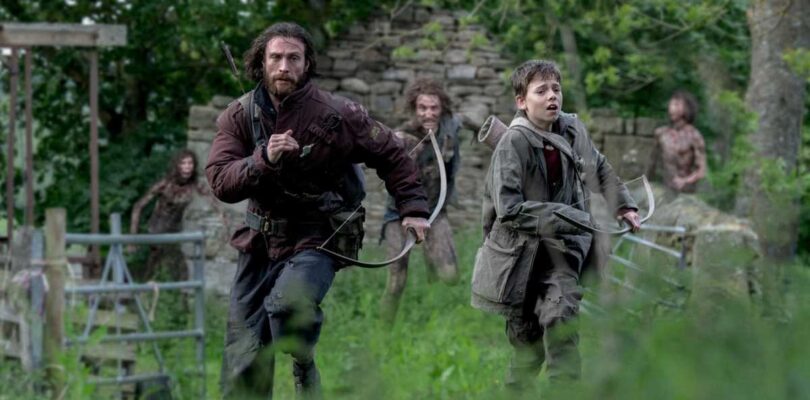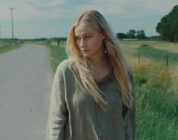Ever since horror maestro George Romero brought new life to the idea of the undead back in 1968, it’s felt like zombies have been a pretty constant staple of the horror movie diet. That seminal film inspired filmmakers and studios across the globe to create their own visions of the flesh eaters.The genre grew and grew until finally reaching new heights in 1978 when, with the assistance of special effects makeup expert Tom Savini, Romero returned to the genre with Dawn of the Dead, showering screens with a level of blood and guts that forever changed the horror film industry.It might seem odd to hear in this era of horror where zombies, and extremely gory effects, are so commonplace that they’ve made it to our TV screens, but there was a period there where movies featuring the undead were less prevalent. From the late 1980s up to the new millennium, they were often relegated to straight-to-video fare, and the ones that did make it to theaters played the creatures for laughs more often than scares. Zombies had reached the “parody stage” that film trends eventually come to.Then, in 2002, something happened, something magical, something that hadn’t been done or seen for decades. Director Danny Boyle and writer Alex Garland reinvigorated and reinvented the zombie genre with the equally-seminal-to-Romero film 28 Days Later. It spawned a sequel, 28 Weeks Later in 2007, and after a long period of rights entanglement we finally have a new entry: 28 Years Later.Europe was able to stop the Rage virus from spreading outside the United Kingdom, and the isles were placed under full quarantine, with anyone left forced to stay and fend for themselves. A group of survivors live in a village on an island just off England’s coast. The mainland can be reached by a causeway, but it’s only traversable during low tide.Going to the mainland and getting a first kill is a rite of passage for these folks, and Jamie (Aaron Taylor-Johnson) has decided his 12-year-old son Spike (Alfie Williams) is ready. During their expedition, the duo gets trapped by a group of infected and they miss the low tide. Holed up in a decrepit house, Spike see a large fire in the distance. He asks his father about it, but Jamie says it’s nothing.Spike’s mother, Isla (Jodie Comer), is mostly bedridden. Her illness causes spells where she doesn’t know where she is or that she’s even an adult. During the town celebration of Jamie and Spike’s successful return, Spike leaves the party and heads home. A family friend, Sam (Christopher Fulford), is there keeping an eye on Isla, and Spike asks him about the fire. Sam tells him it’s a man named Dr. Kelson (Ralph Fiennes), who was a real doctor before the quarantine. Spike decides that Kelson is the answer to his mother’s illness, so he causes a diversion and sneaks over to the mainland with Isla in tow.While writing and directing duties were handed over to a different team for the second film in this series, Boyle and Garland have returned in their respective roles for 28 Years Later. Thus, having them back has once again reinvigorated—and even somewhat reinvented—the genre.Like all good zombie material, the focus of Years is more on the humanity of the story. We know right away that Jamie is one of the “manly” men of the community and wants Spike to be the same (the fact he named his boy that says it all, right there). Spike, though, leans toward the sympathetic side of his nature, being more concerned for Isla’s well-being than Jamie, who appears to feel it as a burden.The actors all bring their characters to vivid life, making us care for them way more than you’ll expect to. Going into a zombie film, I definitely wasn’t figuring on getting teary-eyed during it.As for reinvention, the entire film was shot on an iPhone, which makes it the biggest theatrically released movie to have done this. It follows in the footsteps of how Days was shot using a digital camera, which was very new technology at the time.Shooting Years this way does keep the gritty feel of Days, which really drew you into the picture, like you were another character within the story. I will say, though, a few shots here and there didn’t quite hold up to the expansion of playing on a big screen. Not a huge problem, but it occasionally drew me out of the story.By the way, in case you didn’t know, this is the first of a proposed trilogy, with the second film directed by Nia DaCosta (the Candyman reboot) and expected in January. I mention this so you won’t be surprised when this film doesn’t necessarily “end.”Overall, 28 Years Later is a marvelous experience, buoyed by a compassionate script and heartfelt performances.
Ever since horror maestro George Romero brought new life to the idea of the undead back in 1968, it’s felt like zombies have been a pretty constant staple of the horror movie diet. That seminal film inspired filmmakers and studios across the globe to create their own visions of the flesh eaters.
The genre grew and grew until finally reaching new heights in 1978 when, with the assistance of special effects makeup expert Tom Savini, Romero returned to the genre with Dawn of the Dead, showering screens with a level of blood and guts that forever changed the horror film industry.
Advertisement
It might seem odd to hear in this era of horror where zombies, and extremely gory effects, are so commonplace that they’ve made it to our TV screens, but there was a period there where movies featuring the undead were less prevalent. From the late 1980s up to the new millennium, they were often relegated to straight-to-video fare, and the ones that did make it to theaters played the creatures for laughs more often than scares. Zombies had reached the “parody stage” that film trends eventually come to.
Then, in 2002, something happened, something magical, something that hadn’t been done or seen for decades. Director Danny Boyle and writer Alex Garland reinvigorated and reinvented the zombie genre with the equally-seminal-to-Romero film 28 Days Later. It spawned a sequel, 28 Weeks Later in 2007, and after a long period of rights entanglement we finally have a new entry: 28 Years Later.
Europe was able to stop the Rage virus from spreading outside the United Kingdom, and the isles were placed under full quarantine, with anyone left forced to stay and fend for themselves. A group of survivors live in a village on an island just off England’s coast. The mainland can be reached by a causeway, but it’s only traversable during low tide.
Going to the mainland and getting a first kill is a rite of passage for these folks, and Jamie (Aaron Taylor-Johnson) has decided his 12-year-old son Spike (Alfie Williams) is ready. During their expedition, the duo gets trapped by a group of infected and they miss the low tide. Holed up in a decrepit house, Spike see a large fire in the distance. He asks his father about it, but Jamie says it’s nothing.
Spike’s mother, Isla (Jodie Comer), is mostly bedridden. Her illness causes spells where she doesn’t know where she is or that she’s even an adult. During the town celebration of Jamie and Spike’s successful return, Spike leaves the party and heads home. A family friend, Sam (Christopher Fulford), is there keeping an eye on Isla, and Spike asks him about the fire.
Sam tells him it’s a man named Dr. Kelson (Ralph Fiennes), who was a real doctor before the quarantine. Spike decides that Kelson is the answer to his mother’s illness, so he causes a diversion and sneaks over to the mainland with Isla in tow.
While writing and directing duties were handed over to a different team for the second film in this series, Boyle and Garland have returned in their respective roles for 28 Years Later. Thus, having them back has once again reinvigorated—and even somewhat reinvented—the genre.
This content is imported from YouTube.
You may be able to find the same content in another format, or you may be able to find more information, at their web site.
Like all good zombie material, the focus of Years is more on the humanity of the story. We know right away that Jamie is one of the “manly” men of the community and wants Spike to be the same (the fact he named his boy that says it all, right there). Spike, though, leans toward the sympathetic side of his nature, being more concerned for Isla’s well-being than Jamie, who appears to feel it as a burden.
The actors all bring their characters to vivid life, making us care for them way more than you’ll expect to. Going into a zombie film, I definitely wasn’t figuring on getting teary-eyed during it.
As for reinvention, the entire film was shot on an iPhone, which makes it the biggest theatrically released movie to have done this. It follows in the footsteps of how Days was shot using a digital camera, which was very new technology at the time.
Shooting Years this way does keep the gritty feel of Days, which really drew you into the picture, like you were another character within the story. I will say, though, a few shots here and there didn’t quite hold up to the expansion of playing on a big screen. Not a huge problem, but it occasionally drew me out of the story.
By the way, in case you didn’t know, this is the first of a proposed trilogy, with the second film directed by Nia DaCosta (the Candyman reboot) and expected in January. I mention this so you won’t be surprised when this film doesn’t necessarily “end.”
Overall, 28 Years Later is a marvelous experience, buoyed by a compassionate script and heartfelt performances.





